One AI Tutor Per Child: Personalized learning is finally here
Update (Nov 1, 2024): What does it actually mean to personalize learning?
My wife and I run a micro-school in Mumbai, India. We recently celebrated its one-year anniversary. Our kids go there along with 15 others. As we like to joke, we are doing small-batch, locally sourced, artisanal education. I also run a tech startup where we are building a product in the learning space. Both of these were born as a result of the pandemic when schools shut down and we saw up close what happens in the name of education.
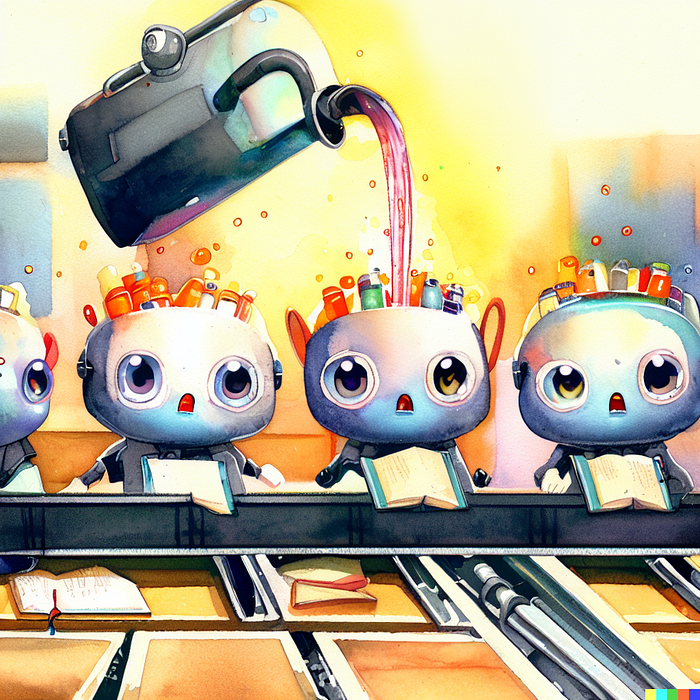
Having kids sacrifice their childhoods to passively sit in classrooms while one heroic teacher after another attempts to pour knowledge into them is utterly bone-headed. We have known this for a long time now. Many passionate educators, from John Holt to John Taylor Gatto, have written articulately and angrily about this.
We now have lived experience of what a different education can look like. On a daily basis we see how kids can flourish and learn when allowed to actively explore and engage with the world. Worksheets and textbooks are poor substitutes for rich, multi-sensory experiences where learning happens pretty much by default.
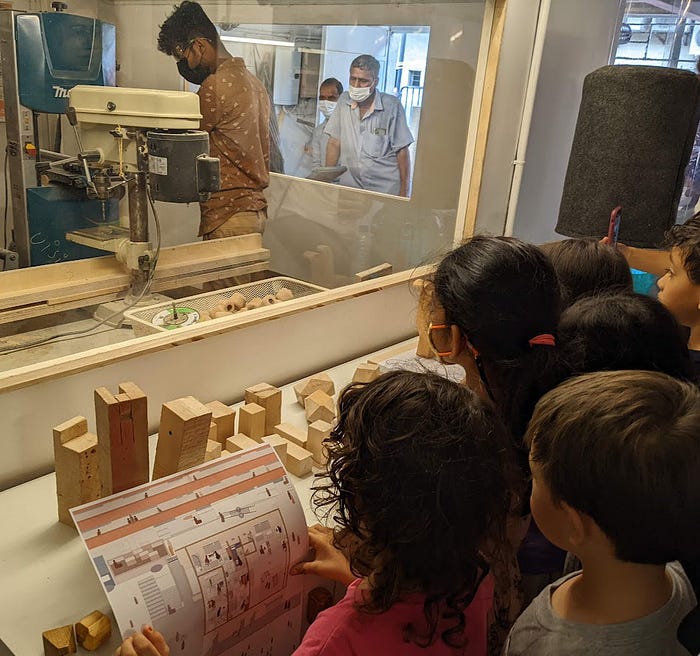
Before you think we are anarchist hippies rejecting all systems and institutions outright, I want to add that we are both “well educated” and products of what I’ll call the conveyor belt model of education. I have an undergraduate degree from an IIT, a PhD in neuroscience and I’ve co-authored two non-fiction neuroscience books. Ours is a considered rejection of what many, many parents feel is an evil but necessary treadmill.
Here’s the truth. We do not need this treadmill to learn and be educated. We do not need this conveyor belt to package and transport kids to success in an adult world.
“The most important single factor influencing learning is what the learner already knows. Ascertain this and teach him accordingly” — David Ausubel

Most teachers will recognize this rendering of Bloom’s taxonomy. At the top of the heap of our educational learning objectives is the ability to create. At the bottom we have rote learning.
Currently, both teaching and learning largely operate at the bottom level because of systemic reasons: standardized curriculum and stringent assessment [1].
We are creating map memorizers, when the world needs explorers.
This is not a recent realization [2]. We’d obviously love for all learners to high five each other at the summit. But translating these ideals into daily practice is tough. Great teachers are just good at this sort of thing. They can assess where a particular student’s interests and knowledge gaps are and artfully construct bridges to steer their understanding. Unfortunately, great teachers do not scale.
To add to this, this mode of active learning is devilishly difficult with large student-teacher ratios. This calls for small sizes where empowered teachers are able to actively engage one-on-one in small group settings. This in turn means it cannot be replicated easily without greatly increasing costs.
All that has changed now.
The latest generation of AI models are transformative in this very aspect. They can be used as highly creative tutors to students and assistants to teachers and help supercharge the interactive teacher-learner loop that is essential for active, generative learning (More on this later). In fact, we are already using these AI models offline and online.
On the assisting teachers end, we already use it to explore developmentally appropriate curriculum and translate it into daily pedagogy. That’s a fancy way of saying we can go from what can we learn now to how can we learn it well with ease.
Consider this example: How do we teach kids about place value notation? We take something that took humanity over 40,000 years to invent and decide that a first grader should learn this highly abstract idea in about a month!
Attempting to teach this abstraction without anchoring it in any context will inevitably lead to the rote learning basement of the pyramid.
What if, instead, we could make it more playful?
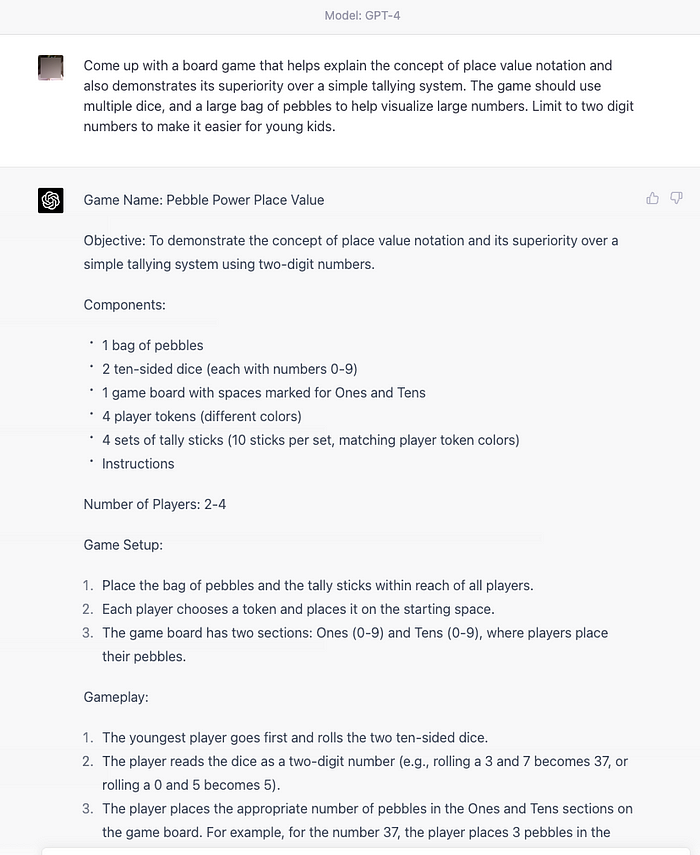
Or how about coming up with a playful story kids can act out?
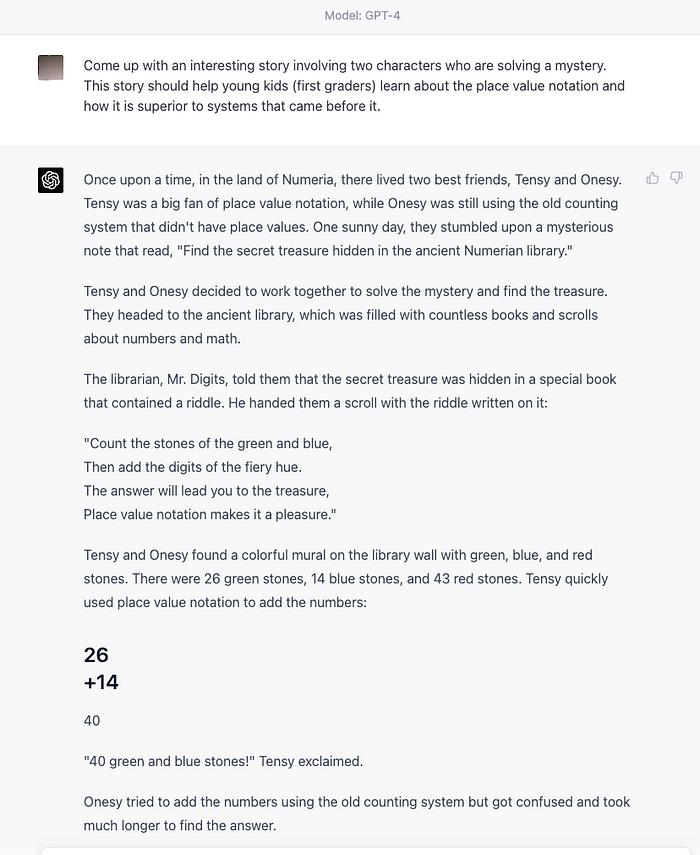
(The above examples were created using the latest GPT-4 version of ChatGPT. This is obviously the most well known one, but I think we are going to see other equally powerful models Large Language Models (LLMs) in the next 12 to 18 months. Also, these are first-draft answers; what I’d call 2-cent answers: the most likely answers the AI spits out. It is possible to do a better search of the solution space with some exploration and refinement of answers to get significantly better answers. We’ll soon have tools built on top of LLMs that help us do this solution search more efficiently and creatively.)
These examples show how even the raw technology is already promising for offline assistance in teacher-student loops.
AI tutors can also be used to massively scale up personalized, interactive online. At our startup, we are using AI and LLMs to power a host of things from conversational text to storytelling and imagery.
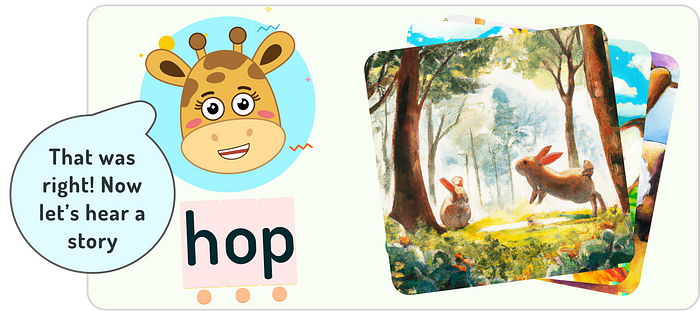
These are all examples of something profound: We can marry any pedagogical style to any pedagogical content. Whether it is math using board games and mysteries, or advanced medical literature using case studies rendered in rap lyrics. This in turn means that a particular teacher’s pedagogical style is no longer a barrier to creating a resonant learning loop with a student who prefers a different style.
The Resonant Learning Loop
This is going to sound hyperbolic, but the last time we had something as game-changing was when we stumbled into the cognitive apparatus that allowed us to learn from others. We humans excel at what’s called imitation learning. We invented language as a result of this. One could argue that all advances we have made in the last 50,000 years are a result of this single cognitive/neural advance.
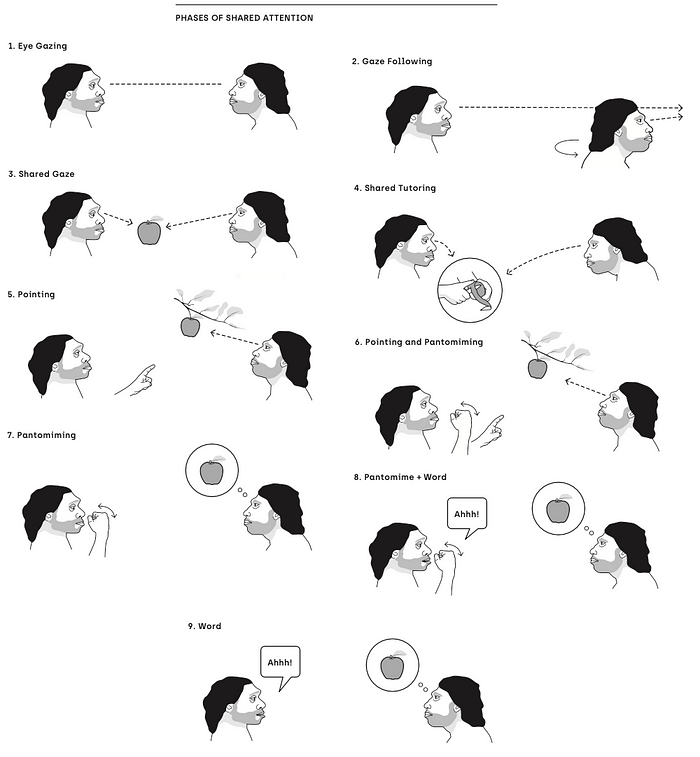
This learning loop, which pairs two individuals, is the reason why one-on-one learning and tutoring has historically outstripped every other mode of learning, and continues to do so. The limiting factor for this loop is that the two individuals have to speak the same language, linguistically and pedagogically.
Now, with generative AI, we have the ability — today — to massively boost this human-human loop by inserting into it an AI tutor/assistant who also doubles as a pedagogy translator.
The computer is the Proteus of machines. Its essence is its universality, its power to simulate. Because it can take on a thousand forms and can serve a thousand functions, it can appeal to a thousand tastes. — Seymour Papert
What Seymour Papert — inventor of LOGO, pioneering educator, and the original inspiration for the One Laptop Per Child initiative — said about computers back in the early nineties is even more true of AI now.
We are now within touching distance of giving every child their own personal Aristotle.
Notes
[1] When systems force us to be reductive and reduce all learning to a single dimension or point like a grade, we all end up in the basement of the pyramid. See Diane Ravitch.
[2] The idea of fostering the ability to create, or Generative Learning (not the same as Generative AI) as it is known is not new. Its essence is that one must actively engage with new material, explore different possibilities, and draw on their own past knowledge for meaningful learning to happen. As with most sound and interesting ideas in learning research, it has not percolated into practice.
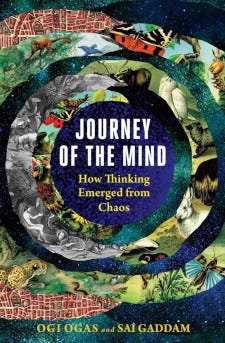
What is learning? What does it mean to have a mind? To think or feel? Answering these questions is more important than ever at the dawn of this AI age. Our latest book, Journey of the Mind: How Thinking Emerged from Chaos is a good introduction.
Update: Many interesting points in the Hacker News discussion of this article. One point I’ll add is many seem to be missing that we are talking about boosting the human-human loop with a learning tutor/co-pilot. We are not talking about an AI tutor taking over entirely. Learning is always best when it is bi-directional and collaborative.
You might also like reading: What does it actually mean to personalize learning?
